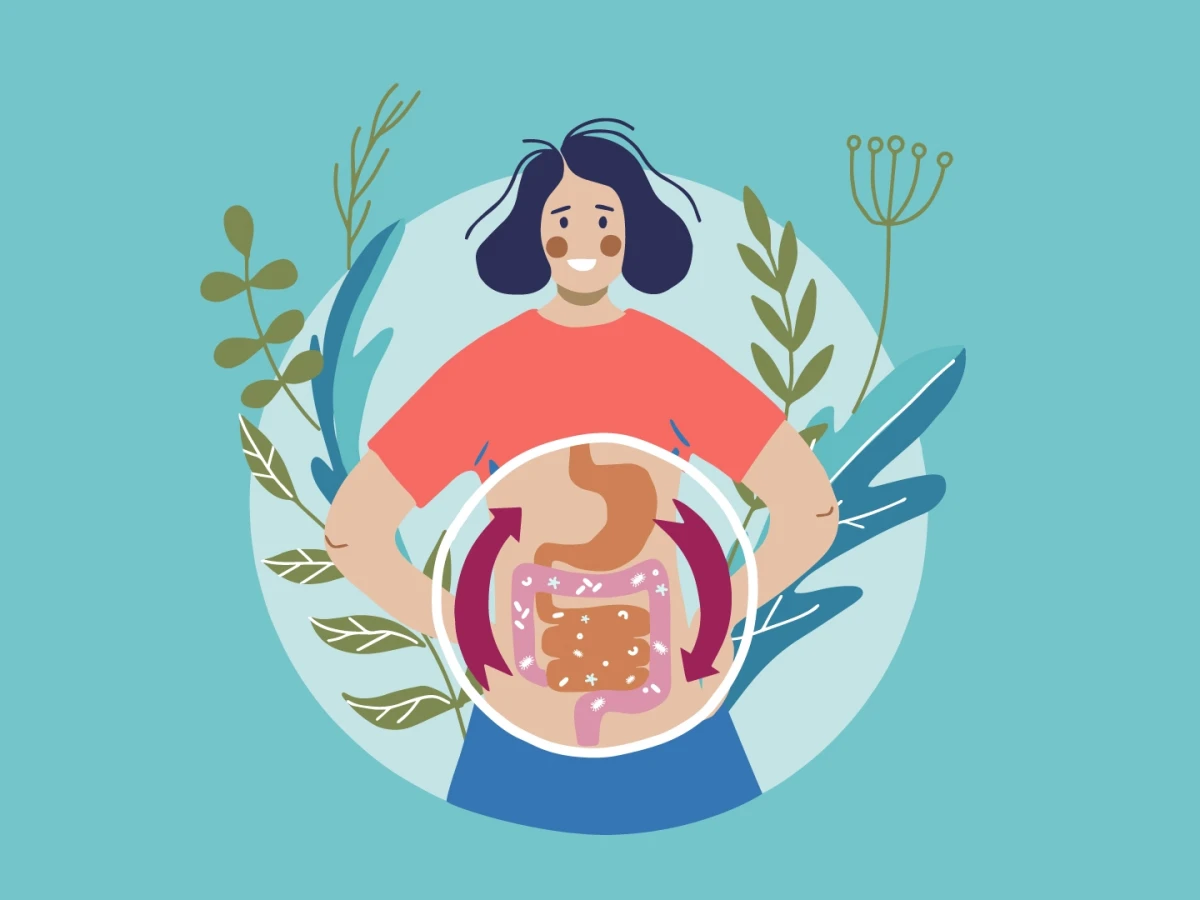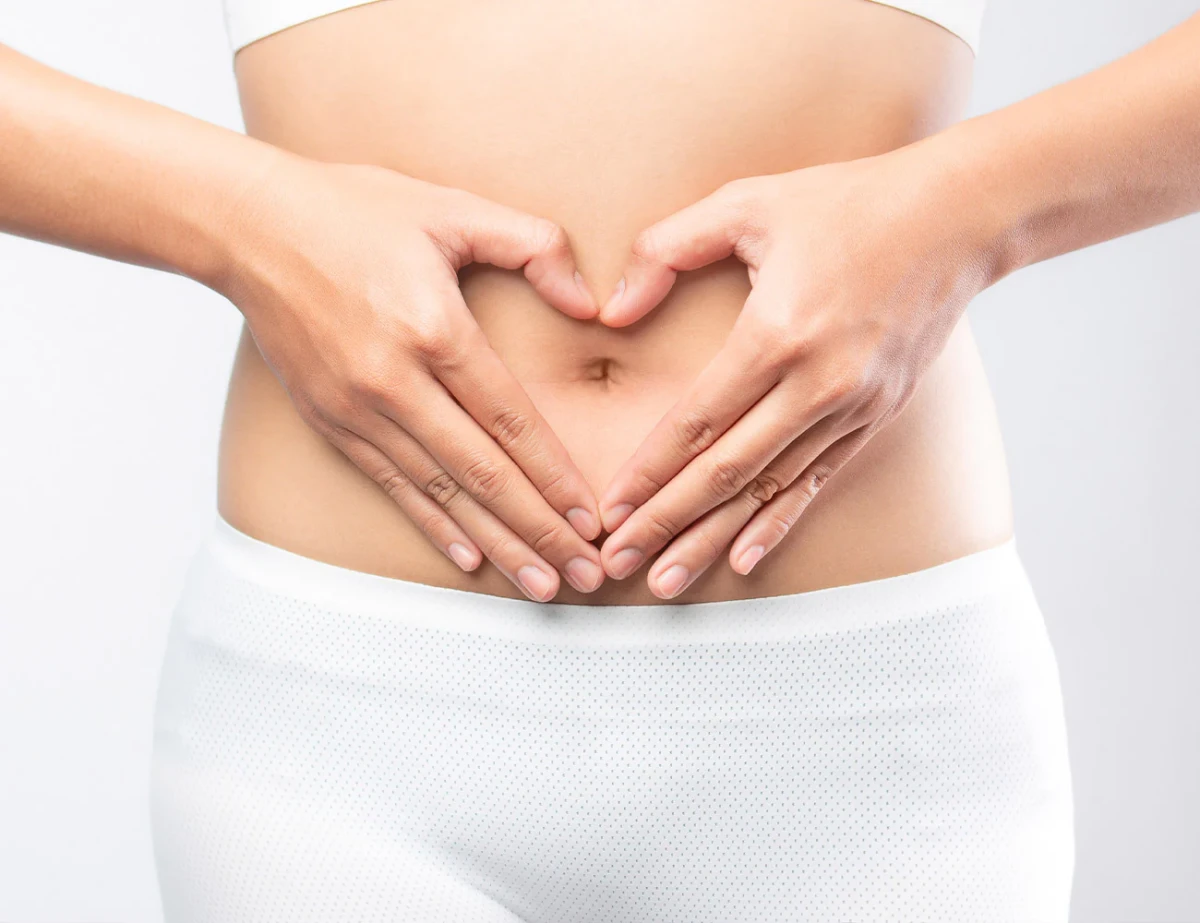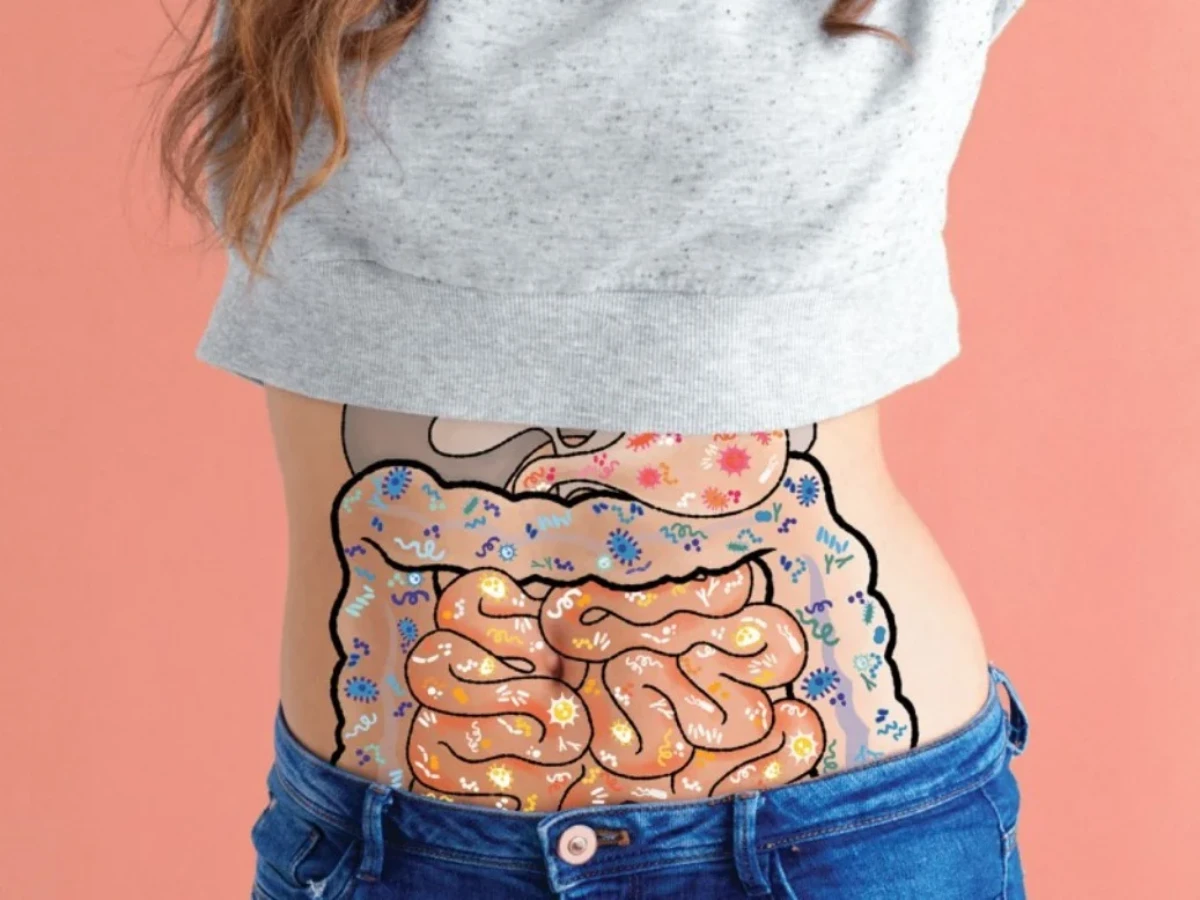Your Gut Is Trying to Tell You Something. Are You Listening?
After years of working with clients on their health, I’ve learned one thing that’s practically a universal truth: the gut doesn’t whisper. When something’s off, it sends out signals. Sometimes they’re loud and clear, like that sudden bloat after a meal or a painful cramp. Other times, they’re sneakier—think a stubborn skin rash that just won’t go away or a bone-deep fatigue you can’t shake.
In this article
- Meet Your ‘Second Brain’ (Yes, It’s a Real Thing)
- Signal 1: The Obvious Digestive Drama
- Signal 2: When Your Skin Flares Up
- Signal 3: Mood, Energy, and Sleep Taking a Nosedive
- Signal 4: Unexplained Weight Changes
- Signal 5: Cravings That Feel Out of Control
- Signal 6: Suddenly You Can’t Eat Your Favorite Foods
- Practical Steps to Start Listening to Your Gut
- Safety First: When to Call a Professional
- Inspirational Gallery
So many of us just learn to live with this stuff. We chalk it up to getting older or just being stressed out. But here’s the thing: those are important messages from one of the most intelligent systems in your entire body. Learning to translate what your gut is saying is honestly the first real step toward feeling genuinely well.
This isn’t about the latest fad diet or dropping a fortune on fancy supplements you saw online. It’s about building a real understanding of how your body is designed to work. Think of this as the kind of chat we’d have if you were sitting in my office. I want to pull back the curtain and show you the ‘why’ behind these signals. My goal is to empower you to become your own best health detective. Of course, this is all for your education. It’s not a substitute for a real medical diagnosis. If you have symptoms that are serious or just won’t quit, your first stop should always be a qualified doctor.

Meet Your ‘Second Brain’ (Yes, It’s a Real Thing)
Before we can decode the messages, we have to understand the system that’s sending them. That term ‘second brain’ isn’t just a gimmick. It refers to the enteric nervous system, or ENS, which is a mind-bogglingly complex network of over 100 million nerve cells embedded in the wall of your gut. It’s so sophisticated that it can run the whole digestive show without any input from the brain in your head.
But its job doesn’t stop at digestion. The ENS is in constant communication with your primary brain through a massive nerve that acts like a two-way superhighway. This means what happens in your gut directly impacts your mood, your thoughts, and even how you handle stress. And, you guessed it, what happens in your brain directly impacts your gut.
Inside this system lives your gut microbiome—a bustling ecosystem of trillions of microorganisms. In a healthy gut, this community lives in balance. The good guys help you digest food, create essential vitamins, fend off invaders, and keep your immune system in check. They’re the diligent gardeners of your inner world.

Then there’s the physical barrier itself. Your intestinal lining is incredibly thin (just one cell thick!) but it’s a powerful gatekeeper. These cells are supposed to be held together by tight little protein clasps. When this barrier is strong, it lets all the good stuff (nutrients) pass into your bloodstream while blocking toxins and undigested food. When it gets compromised—a condition you might hear called ‘leaky gut’—unwanted particles can slip through, triggering low-grade inflammation all over your body. And that, my friends, is often at the root of many chronic health problems.
Signal 1: The Obvious Digestive Drama
The most direct signals are, no surprise, digestive ones. But just saying you have an ‘upset stomach’ isn’t enough. The details tell the real story.
Bloating and Gas: Look, everyone gets a little gassy sometimes. But if you’re dealing with chronic, painful bloating that has you unbuttoning your pants after most meals, that’s a signal. The timing gives us clues. If you bloat almost immediately after eating, it might point to low stomach acid or not enough digestive enzymes. If the bloat shows up an hour or two later, it often suggests fermentation happening in the small intestine, a classic sign of something called Small Intestinal Bacterial Overgrowth (SIBO). Even the smell matters. Odorless gas is usually just swallowed air. But if it consistently smells like sulfur or rotten eggs, that could mean you’re having trouble digesting certain foods or have an overgrowth of specific bacteria.

Constipation and Diarrhea: Your bathroom habits are a vital health sign. Seriously, open a new tab and Google ‘Bristol Stool Chart’ right now. It’s a medical tool that classifies things into seven types, and it’s a game-changer for understanding what’s going on. Types 3 and 4 are the goal. If you’re chronically constipated (fewer than three bowel movements a week), it means waste is sitting around for too long, letting toxins get reabsorbed. Chronic diarrhea means you’re probably not absorbing nutrients and are losing precious fluids and electrolytes. Bouncing between the two is a hallmark of Irritable Bowel Syndrome (IBS), a condition that’s all about a stressed-out gut-brain connection.
Heartburn and Reflux: Most people assume heartburn is from having too much stomach acid. While that can happen, it’s often the exact opposite: there’s too little. Here’s why that’s a problem. The little valve at the top of your stomach needs a strong acid signal to slam shut. Without enough acid, it stays a little lazy and loose, allowing what little acid is there to splash up and cause that burn. Taking acid-blockers can bring relief, but in this case, it might make the root problem worse over time.

Good to know: Wondering if you might have low stomach acid? There’s a simple, though not 100% conclusive, at-home test you can try. First thing in the morning, on an empty stomach, mix 1/4 teaspoon of baking soda in about 4-6 ounces of water and drink it. If your stomach acid is adequate, you should have a good burp within 2-3 minutes. If you get to 5 minutes with no burp, it’s a hint that you might have low stomach acid. Again, it’s not a medical diagnosis, just a clue!
Signal 2: When Your Skin Flares Up
Your skin is often a mirror reflecting what’s happening on the inside. I’ve seen it time and time again: a client comes in for digestive help, and they’re shocked when their lifelong eczema or acne starts to clear up, too. This is the gut-skin axis at work.
Acne, Rosacea, and Eczema: These persistent inflammatory skin issues are so often tied to an imbalanced gut. When that gut barrier is leaky, inflammatory particles get into your bloodstream, travel to your skin, and trigger a reaction. Eczema is frequently linked to a confused immune system, which is mostly trained and regulated by your gut bacteria. A lack of microbial diversity can lead to an overzealous immune response that shows up on your skin.

A little insight: In my experience, when we’re trying to calm down angry skin by addressing the gut, the most common food triggers I see, right after the big ones like gluten and dairy, are often corn, soy, and eggs. Removing them for a few weeks can be really revealing.
Psoriasis: This is an autoimmune condition where the body’s own defense system attacks healthy skin cells. Since about 70-80% of your entire immune system lives in your gut, it makes sense that an unbalanced microbiome can be a major trigger. Working on gut health—removing triggers and healing the gut lining—can be a powerful partner to conventional medical treatments for managing psoriasis.
Signal 3: Mood, Energy, and Sleep Taking a Nosedive
Ever felt ‘hangry’ or had a ‘gut feeling’ about something? That’s the gut-brain axis in action. The connection is incredibly deep and a huge focus of modern research.
Anxiety and Depression: Get this—around 90% of your body’s serotonin, the ‘feel-good’ neurotransmitter, is produced in your gut. And your gut microbes have a direct hand in that process. When they’re out of whack, serotonin production can get disrupted, which can contribute to feelings of anxiety and depression. On top of that, inflammation in the gut can trigger inflammation in the brain, a factor that’s increasingly linked to mood disorders.

Sleep Troubles: Your gut plays a role here, too. Serotonin is the precursor to melatonin, the hormone that governs your sleep-wake cycles. A struggling gut can mess up that whole production line. Plus, an inflamed or distressed gut can send stress signals to your brain all night long, leading to restless, unrefreshing sleep. If you wake up tired no matter how many hours you clock, your gut might be a piece of the puzzle.
Signal 4: Unexplained Weight Changes
Your gut microbiome has a massive influence on your metabolism. If you’re gaining or losing weight without changing your diet or exercise, it could be a sign of a deep-seated gut imbalance.
Stubborn Weight Gain: Certain families of gut bacteria are just better at extracting calories from your food. An imbalanced gut can also fuel inflammation, which messes with hormones like insulin and leptin that control your blood sugar and feelings of fullness. This can create a frustrating cycle of insulin resistance and fat storage, especially around the middle.

I once worked with a client who was at her wit’s end. She ate incredibly clean and exercised regularly but couldn’t lose a pound. Instead of cutting more calories, we ran a comprehensive stool test. It showed significant microbial imbalance and inflammation markers. We completely shifted focus to healing her gut. Over the next six months, without any more food restriction, her weight started to normalize. It was a huge lesson: you simply can’t have a healthy metabolism without a healthy gut.
Unintentional Weight Loss: On the flip side, an unhealthy gut can lead to malabsorption, where you just aren’t breaking down and absorbing nutrients properly. If you’re eating plenty but losing weight and feeling wiped out, that’s a serious signal that needs immediate medical attention.
Signal 5: Cravings That Feel Out of Control
Do you get hit with intense cravings for sugar or carbs that feel like a battle of willpower you always lose? It might not be you—it might be your gut microbes.

The Vicious Cycle: Unhelpful bacteria and yeasts thrive on sugar. To get what they want, they can actually send chemical signals to your brain that make you crave the very foods they feast on. When you give in, they flourish and multiply, and their craving signals get even stronger. It’s a tough cycle to break.
A lesser-known trick: The next time a powerful sugar craving hits, try a ‘pattern interrupt.’ Instead of reaching for the sweet stuff, have something bitter or sour. A handful of arugula, a few olives, or a spoonful of kimchi can often stop the craving in its tracks. These flavors stimulate digestion and help reset your palate.
Signal 6: Suddenly You Can’t Eat Your Favorite Foods
Developing a reaction to a food you’ve eaten your whole life is a super common and confusing sign that your gut barrier might be compromised.
Intolerance vs. Allergy: It’s important to know the difference here. A food allergy is a fast and potentially life-threatening immune response. A food intolerance is usually a delayed reaction with symptoms like bloating, headaches, or rashes. Intolerances often happen because your gut has become ‘leaky,’ and your immune system is now overreacting to partially digested food particles it doesn’t recognize.

The solution isn’t just to avoid that food forever; it’s to heal the underlying gut permeability that’s causing the reaction in the first place.
Practical Steps to Start Listening to Your Gut
If any of this is ringing a bell, there are some foundational things you can do. But it’s also crucial to know when you need a professional.
Feeling Overwhelmed? Start Here.
If all this info feels like a lot, just try these three things this week. That’s it.
- Chew your food. I mean, really chew it. Until it’s practically liquid. This is the first, most important step of digestion.
- Add one forkful of fermented food to your dinner. Think sauerkraut or kimchi. Just a little bit!
- Take three deep belly breaths before you eat. This simple act tells your nervous system it’s time to ‘rest and digest.’
Ready for a Deeper Dive? The 4 ‘R’ Framework
- Remove: For 3-4 weeks, try removing the most common gut irritants: processed foods, added sugars, industrial seed oils (like canola, soy, corn oil), and potentially gluten and dairy, which are big triggers for many.
- Replace: Support your digestion. Besides chewing, you can try digestive bitters before meals to encourage your body to produce its own enzymes.
- Reinoculate: Introduce good bacteria with fermented foods. Heads up! If you go from zero to a whole cup of kimchi, you’re going to have a bad time (hello, bloating!). Start with a teaspoon and work your way up slowly. Also, eat a wide variety of plants to feed the good guys—think onions, garlic, asparagus, leeks, and bananas.
- Repair: Give your gut lining the building blocks it needs. Bone broth is rich in collagen and amino acids. Foods high in zinc (oysters, beef, pumpkin seeds) and Vitamin A (liver, sweet potatoes) are also key.
What if I’m vegetarian or vegan? No problem. For repair, you can simmer a rich mushroom-veggie broth with a piece of kombu seaweed to get extra minerals. You can also supplement with L-glutamine powder, an amino acid that’s absolutely crucial for repairing the gut lining. You can find it at most health food stores or online for about $20-$30 a container.
Safety First: When to Call a Professional
Trying to improve your gut health on your own is great, but it’s not always the right move. Please see a doctor immediately if you experience any ‘red flag’ symptoms:
- Blood in your stool (bright red or black)
- Severe, non-stop abdominal pain
- Rapid, unexplained weight loss
- Difficulty swallowing
- Anemia showing up on your blood work
A Gastroenterologist is the specialist who can rule out or diagnose serious conditions. Once you have a clear diagnosis, a Registered Dietitian or a Clinical Nutritionist with gut health experience can help you create a personalized plan. They might suggest functional testing, but be prepared for the investment: a SIBO breath test can cost between $200-$300, and a comprehensive stool analysis often runs from $400-$600, usually out-of-pocket.
Your gut is always communicating. These signals aren’t just annoyances to be silenced; they’re valuable data. Learning to listen is a journey that takes patience, but the rewards—more energy, a clearer mind, and a deep sense of well-being—are absolutely worth it.
Inspirational Gallery
What’s the real difference between prebiotics and probiotics?
Think of your gut as a garden. Probiotics are the beneficial seeds (live bacteria) you want to plant, found in fermented foods like yogurt, kefir, and kimchi. Prebiotics, on the other hand, are the fertilizer. They are specialized plant fibers that feed the good bacteria already living in your gut. You’ll find them in foods like garlic, onions, bananas, and asparagus. For a truly thriving garden, you need both.
A common misstep: Going all-in on expensive probiotic supplements without changing your diet. Probiotics need the right environment to thrive. Without sufficient prebiotic fiber and a varied, whole-foods diet, even the best supplements can be a waste of money, as the new bacteria will have nothing to eat and nowhere to settle.
Looking for a simple way to feed your microbiome? Try incorporating these powerful prebiotic foods into your weekly meals:
- Chicory Root: A great source of inulin fiber, often found in coffee alternatives or fiber bars.
- Jerusalem Artichokes: Delicious roasted, they have a nutty flavor and pack a prebiotic punch.
- Leeks: A versatile and milder cousin of the onion, perfect in soups and stews.
- Oats: A fantastic source of beta-glucan fiber, which supports healthy gut bacteria.
The Fermentation Factor: Foods like sauerkraut and kombucha aren’t just trendy; they’re ancient preservation methods that create a powerhouse of beneficial microbes. Brands like GT’s Synergy Kombucha or Bubbies Sauerkraut offer readily available options. The slightly sour, effervescent taste is the sign of live, active cultures at work, populating your gut with diverse, beneficial strains that plain vegetables don’t have.
- It can help regulate your digestion.
- It directly signals your brain to reduce stress.
- It physically massages your internal organs.
The secret? The 4-7-8 breathing technique. Simply inhale through your nose for a count of 4, hold your breath for a count of 7, and exhale completely through your mouth for a count of 8. Repeating this 3-4 times can calm a stressed gut in minutes by activating the vagus nerve—the main information highway between your brain and digestive system.
The next frontier in gut health is hyper-personalization. Instead of generic advice, emerging services like ZOE use at-home testing kits to analyze your unique gut microbiome and blood sugar responses. The result is a personalized report and app that tells you exactly which foods work best for your body. This data-driven approach moves beyond one-size-fits-all diets, empowering you to make food choices based on your own biology, which can be a game-changer for tackling issues like bloating and energy slumps.
Gut-Friendly on a Budget:
Cabbage: Incredibly cheap and the main ingredient for homemade sauerkraut.
Lentils and Beans: Packed with fiber and plant-based protein, they are a cost-effective way to support your gut microbes. Just be sure to introduce them slowly if you’re not used to a high-fiber diet!
This proves that supporting your gut health doesn’t require a big budget, just smart choices in the produce and pantry aisles.
A study from Caltech revealed that gut bacteria are crucial for the production of serotonin, with estimates suggesting 90-95% of the body’s supply is manufactured in our digestive tract.
This explains why an imbalanced gut can have such a profound impact on our mood, anxiety levels, and overall sense of well-being. That ‘gut feeling’ is more than just an expression; it’s a biochemical reality. Nurturing your gut is a direct way to support your mental health.
If you’re adding more fiber, remember the golden rule: go low and slow. A sudden increase can lead to the very bloating and discomfort you’re trying to avoid. Start by adding one new high-fiber food every few days and be sure to drink plenty of water. Water helps the fiber do its job of moving things smoothly through your system. Patience is key to letting your microbiome adapt and thrive.










